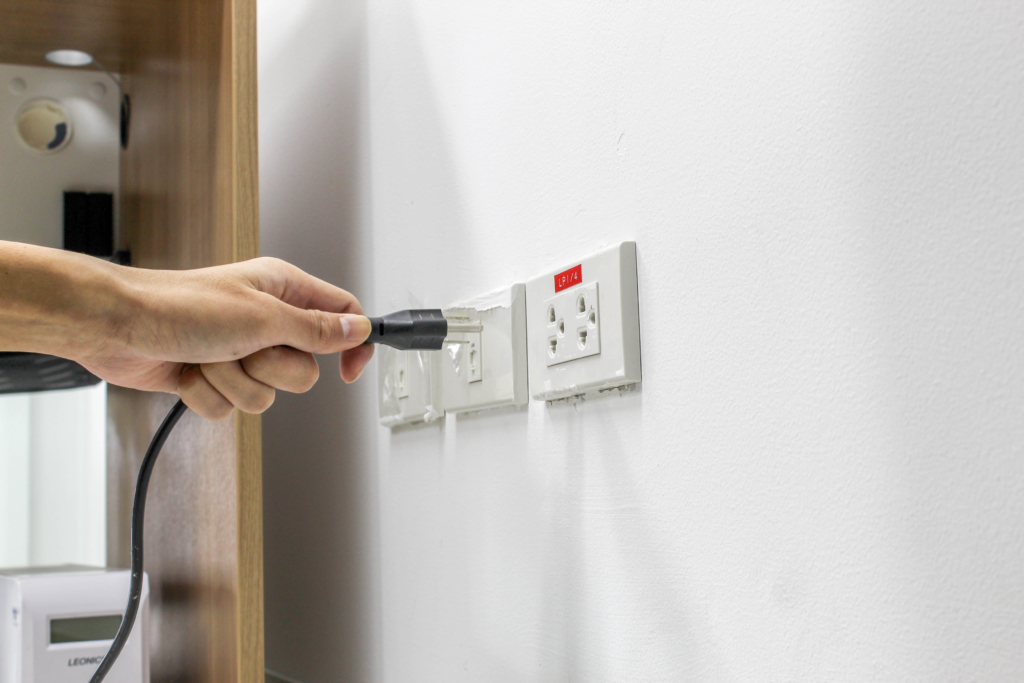What is Electrical Receptacle?
An electrical receptacle is a device that allows electric current to flow from an outlet into a plug or other electrical device. The receptacle is usually located within a wall, opening or cabinet, and connected to an electrical circuit.
The receptacle may be used for multiple purposes, like charging of electric devices such as cell phones and laptops. It also may be used to connect different types of devices together (e.g., a computer and printer).
What is an Electrical Outlet?
An electrical outlet is a household device that connects electrical appliances to a power source, usually a wall socket. Electrical outlets are also known as electrical wall plates.
An electrical outlet has two slots: one for plugging in your appliance and one for wiring up to it. The purpose of this setup is to make the connection between the appliance and the outlet as secure as possible so that if you plug something into an outlet that is not properly connected, it won’t cause damage or short out the wiring.
What is an Electrical Socket?
When people speak of electrical systems, they often use the term socket. This is a mistake, as the word is meant to be a location where you insert something. Sockets are usually associated with lights and outlets since it is easy to insert a lightbulb into one. Instead of using the word socket, electricians often use the word outlet while describing the box where a cord is present to keep things simple.
Types of Electrical Outlet
-
15A 120V outlet
This outlet can be most commonly seen in older homes, and it comes in two versions:
- Two Pronged Outlets: As the name suggests, this version features two long connection slots that help with an ungrounded connection.
- Three Pronged Outlets: The better version of these outlets comes with a ground pin and extra slot that helps you to prevent electric shock when the wiring is loose.
-
20A 120V Outlet
These outlets are perfect for larger appliances which require more power, like kitchen appliances, dishwashers, and washing machines. A small horizontal slot is what makes it easy to tell them these apart from the 15 A version.
-
20A 250V Outlet
Appliances like air conditioners, heaters, air compressors, and vacuum cleaners require a very high level of power. To ensure they run well, people choose to go for these types of outlets. Having a proper circuit in place is necessary before you install a 20A, 250V outlet.
-
30A 125/250V Outlet
The 30A 125/250V outlet is a heavy-duty receptacle that can handle both 125V and 250VAC supply at 60Hz. It’s useful for large appliances like powerful driers.
-
30A 250V Outlet
The 30A 250V outlet is designed to handle power from 250VAC sources. It can have a maximum current draw of 30A, and is used for powerful appliances such as air conditioners, air compressors and welding equipment.
-
GFCI Outlet
The Ground Fault Circuit Interrupter outlets, which are also known as GFCI, are commonly used in places like kitchens and bathrooms as they are close to the water, and the risk of getting an electric shock is high. These outlets can automatically trip when there is a current spike, which also helps prevent some ground faults.
-
AFCI Outlet
Arc fault interrupters, or AFCIs, are another type of safety outlets that prevent electrical hazards in bedroom and laundry areas. You can install them by using a special circuit breaker with your main panel.
-
Tamper Resistant Receptacle
In modern homes, many outlets are designed to prevent tampering or jimmying. These outlets are marked “TR” and come equipped with built-in barriers that prevent the insertion of objects other than plugs with ground prongs or proper two-pin prongs. If you have small children in your home, then we highly recommend installing tamper-resistant outlets as they are safe even if you insert anything other than a proper plug.
-
Weather Resistant Receptacle
Weather-resistant outlets are designed to keep the metal parts from rusting and the plastic cover from cracking. These outlets have been used in outdoor conditions for many years now, and they can provide protection from rain, ice, snow, dirt and humidity.
-
Smart Outlets
It’s no surprise that smart devices are becoming more popular. TVs, lights, ACs—they’re all “smart” compatible, and you can control them by commanding an assistant. If you want to turn a non-smart device into a smart one, you can either use a smart plug or invest in a smart outlet. Wi-Fi and Bluetooth usually control these outlets.

